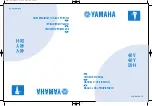
88
Bus:
a data pathway. The term is used especially to refer to the connection
between the processor and system memory, and between the processor and
PCI or ISA local buses.
Bus mastering:
allows peripheral devices and IDEs to access the system
memory without going through the CPU (similar to DMA channels).
Cache:
a temporary storage area for data that will be needed often by an
application. Using a cache lowers data access times since the information is
stored in SRAM instead of slower DRAM. Note that the cache is also much
smaller than your regular memory: a typical cache size is 512KB, while you may
have as much as 4GB of regular memory.
Closed and open jumpers:
jumpers and jumper pins are active when they are
“on” or “closed”, and inactive when they are “off” or “open”.
CMOS (Complementary Metal-Oxide Semiconductors):
chips that hold the
basic startup information for the BIOS.
COM port:
another name for the serial port, which is called as such because it
transmits the eight bits of a byte of data along one wire, and receives data on
another single wire (that is, the data is transmitted in serial form, one bit after
another). Parallel ports transmit the bits of a byte on eight different wires at the
same time (that is, in parallel form, eight bits at the same time).
DDR (Double Data Rate):
a technology designed to double the clock speed of
the memory. It activates output on both the rising and falling edge of the system
clock rather than on just the rising edge, potentially doubling output.
DIMM (Dual In-line Memory Module):
faster and more capacious form of RAM
than SIMMs, and do not need to be installed in pairs.
DIMM bank:
sometimes called DIMM socket because the physical slot and the
logical unit are the same. That is, one DIMM module fits into one DIMM socket,
which is capable of acting as a memory bank.
DMA (Direct Memory Access):
channels that are similar to IRQs. DMA
channels allow hardware devices (like soundcards or keyboards) to access the
main memory without involving the CPU. This frees up CPU resources for other
tasks. As with IRQs, it is vital that you do not double up devices on a single line.
Plug-n-Play devices will take care of this for you.
DRAM (Dynamic RAM):
widely available, very affordable form of RAM which
looses data if it is not recharged regularly (every few milliseconds). This refresh
requirement makes DRAM three to ten times slower than non-recharged RAM
such as SRAM.
Содержание S2932
Страница 4: ...4 NOTE ...
Страница 12: ...12 J18 J64 J17 ...
Страница 18: ...18 J66 J65 J38 ...
Страница 36: ...36 NOTE ...
Страница 84: ...84 NOTE ...





































